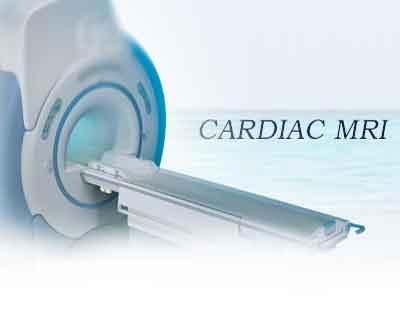- Home
- Editorial
- News
- Practice Guidelines
- Anesthesiology Guidelines
- Cancer Guidelines
- Cardiac Sciences Guidelines
- Critical Care Guidelines
- Dentistry Guidelines
- Dermatology Guidelines
- Diabetes and Endo Guidelines
- Diagnostics Guidelines
- ENT Guidelines
- Featured Practice Guidelines
- Gastroenterology Guidelines
- Geriatrics Guidelines
- Medicine Guidelines
- Nephrology Guidelines
- Neurosciences Guidelines
- Obs and Gynae Guidelines
- Ophthalmology Guidelines
- Orthopaedics Guidelines
- Paediatrics Guidelines
- Psychiatry Guidelines
- Pulmonology Guidelines
- Radiology Guidelines
- Surgery Guidelines
- Urology Guidelines
BOLD MRI accurate method for evaluating myocardial damage in post-STEMI patients

BOLD MRI performed in post-STEMI (ST-segment elevation myocardial infarction) patients allows accurate evaluation of myocardial damage severity and could differentiate reversible from irreversible myocardial injury, finds a new study.
The study, published in the journal European Radiology finds that increased T2* values may imply the pathophysiological mechanism of the salvaged myocardium. BOLD MRI could represent a more accurate alternative to the other currently available options.
Jian-Rong Xu, Department of Radiology, Renji Hospital, School of Medicine, Shanghai Jiao Tong University Shanghai, China, and colleagues conducted the study to investigate the ability of BOLD imaging to differentiate reversible from irreversible myocardial injury as well as the chronological progression of myocardial oxygenation after reperfusion in patients with STEMI.
Read Also: Cardiac MRI Quantification of MR to Identify The Patients For Surgery
BOLD imaging is a quantitative MRI technique allowing the evaluation of the balance between supply/demand in myocardial oxygenation and myocardial hemorrhage.
For the study, twenty-two patients (age, 60 ± 11 years; 77.3% male) with STEMI underwent cardiac MRIs on four occasions: on days 1, 3, 7 and 30 after reperfusion. BOLD MRI was obtained with a multi-echo turbo field echo (TFE) sequence on a 3-T scanner to assess myocardial oxygenation in MI.
Key Findings:
- T2* value in MI with intramyocardial hemorrhage (IMH) was the lowest (9.77 ± 3.29 ms), while that of the salvaged zone was the highest (33.97 ± 3.42 ms).
- T2* values in salvaged myocardium demonstrated a unimodal temporal pattern from days 1 (37.91 ± 2.23 ms) to 30 (30.68 ± 1.59 ms).
- T2* values in the MI regions were significantly lower than those in the remote myocardium, although the trends in both were constant overall.
- There was a slightly positive correlation between T2* in MI regions and EF (Rho = 0.27, p < 0.05) or SV (Rho = 0.22, p = 0.04) and a slightly negative correlation between T2* in salvaged myocardium and LVEDV (Rho = - 0.23, p < 0.05).
Key Takeaways from the Study:
- Myocardial oxygenation and hemorrhage after myocardial infarction affect BOLD MRI values.
- BOLD MRI could be used to differentiate irreversible from reversible myocardial damage.
- Changed oxygenation implies the pathophysiological mechanism of the salvaged myocardium.
For further information log on to 10.1007/s00330-018-5612-y

Disclaimer: This site is primarily intended for healthcare professionals. Any content/information on this website does not replace the advice of medical and/or health professionals and should not be construed as medical/diagnostic advice/endorsement or prescription. Use of this site is subject to our terms of use, privacy policy, advertisement policy. © 2020 Minerva Medical Treatment Pvt Ltd